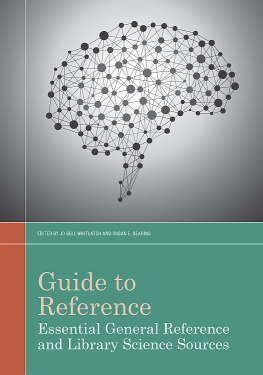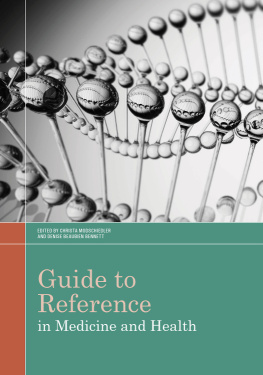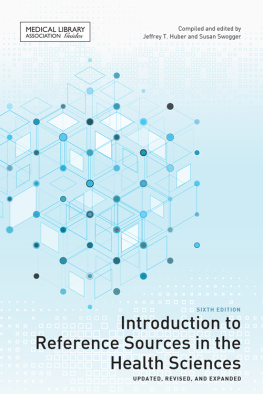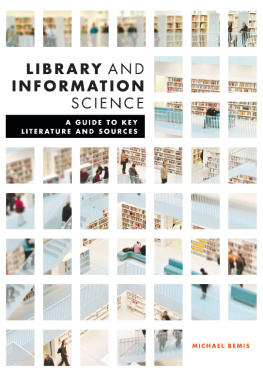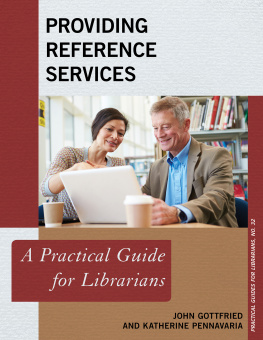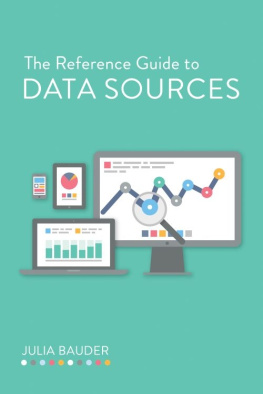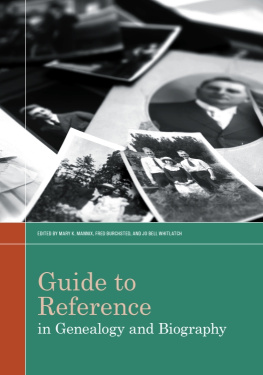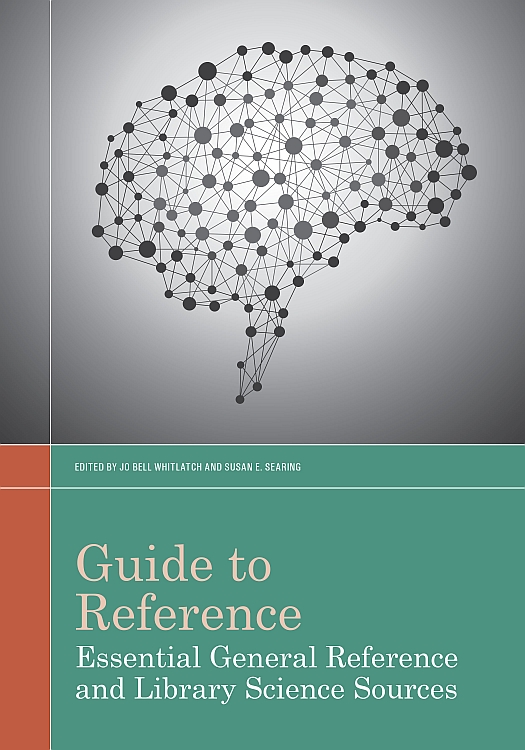
ALA Editions purchases fund advocacy, awareness, and accreditation programs for library professionals worldwide.
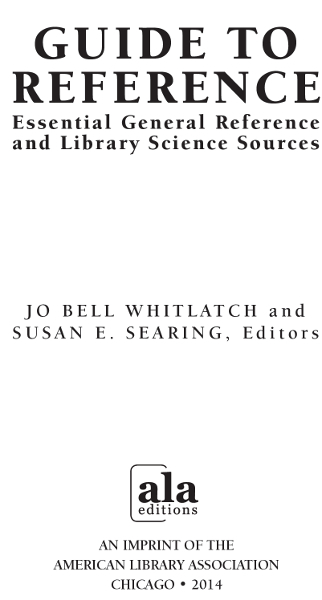
2014 by the American Library Association
Extensive effort has gone into ensuring the reliability of the information in this book; however, the publisher makes no warranty, express or implied, with respect to the material contained herein.
ISBNs: 978-0-8389-1232-4 (paper); 978-0-8389-1994-1 (PDF); 978-0-8389-1995-8 (ePub); 978-0-8389-1996-5 (Kindle). For more information on digital formats, visit the ALA Store at alastore.ala.org and select eEditions.
Library of Congress Cataloging-in-Publication Data
Guide to reference : essential general reference and library science sources / Jo Bell Whitlatch and Susan E. Searing, Editors.
pages cm
Includes bibliographical references and .
ISBN 978-0-8389-1232-4 (alk. paper)
1. Reference booksBibliography. 2. Reference sourcesBibliography. 3. Reference services (Libraries) I. Whitlatch, Jo Bell. II. Searing, Susan E.
Z1035.1.G885 2014
011.02dc23 2014013098
Cover design by Alejandra Diaz. Image Anita Ponne/Shutterstock, Inc.
Contents
Jo Bell Whitlatch
Rosanne M. Cordell and Barry Trott
Fred Burchsted
Steven W. Sowards
Cynthia Thomes
Barbara M. Bibel
Mary K. Mannix
Christopher C. Brown
Melissa S. Van Vuuren
Patrick Reakes
Lili Luo
Donald Altschiller
Jennifer Duncan
Lili Luo
Susan E. Searing
The American Library Association has long been a source for authoritative bibliographies of the reference literature for practicing librarians, library educators, and reference service trainers. ALAs Guide to Reference Books was printed in eleven editions over nearly a century, and was succeeded in 2009 by the online Guide to Reference (www.guidetoreference.org). The Guide to Reference segments, drawn from the online Guide, continue that tradition with expertly compiled, annotated bibliographies of reference works and serve as snapshots of the evolving content of the Guide.
Although intended for use largely in North American libraries serving institutions of higher education, the segments will also be valuable to public and school librarians, independent researchers, publishers and book dealers, as well as librarians outside North America, for tasks such as identifying sources that will answer questions, directing researchers, creating local instructional materials, educating and training LIS students and reference staff, and inventorying and developing reference collections. These guides provide a usably comprehensive, rather than exhaustive, repertory of sources as the foundation for reference and information services in todays higher education settings. They include works that can most usefully satisfy the vast majority of demands made on a reference service, while not altogether excluding exotic or little-known works that will meet only the unusual need.
In addition to providing classified annotated bibliographies, topical sections include editors guides that orient readers to each subject, its scope and concerns, and the types of sources commonly consulted. The editors guides will be useful to the generalist librarian and to the LIS student as background to the bibliographies or as intellectual frameworks for addressing reference questions.
The reader will find entries for works that are, for the most part, broadly focused; works on individual persons or with a narrow geographical or chronological focus are generally not included. Selection criteria favored titles published in the last twenty years; the reader may consult earlier printed bibliographies and indexes, such as the numerous print editions of the Guide to Reference Books, for many earlier and still important works. As libraries shift their print reference works to the general stacks or to remote locations, the online Guide and its older print editions may help to identify reference works that are no longer close at hand.
Sources in the Guide include websites, search engines, and full-text databases as well as the traditional array of encyclopedic, bibliographic, and compendious works. Online sources have replaced their printed versions for most librarians under most circumstances. A source only appears in one format; its annotation will identify the format options and describe the relationships between online and print versions. New reference works or editions are not automatically included in the Guide. Selection criteria favor sources that have stood some test of time and utility, as well as sources that are free but authoritative or sources that require purchase or licensing but are held at enough libraries to be reasonably available to readers of the Guide. The General Reference Works sections do not include the vast majority of discipline-specific sources that are covered in the History and Area Studies; Humanities; Science, Technology, and Medicine; or Social and Behavioral Sciences divisions; please consult the discipline specific volumes or the online Guide for specialized discipline sources.
The reader is encouraged to peruse the annotations of entries in the same subcategory as known items. An annotation may contain extensive cross references to related sources that are not described separately as well as comparisons to related sources, indications of appropriate audiences for the source, and other details that provide significant added value. In an attempt to balance inclusion and exhaustion, a source may be included in several but not necessarily all relevant subcategories.
This segment on Essential General Reference and Library Science Sources includes sources for each patron and librarian in every type of library. The first subsection on Essential General Reference Works draws from more than 5600 General Reference Works currently annotated in the online Guide and is intended to provide a basic set of the most useful general reference sources for librarians assisting patrons with their queries or, for patrons pursuing queries on their own. The subsection on Library Science includes the majority of works about library science that are currently represented in the online Guide.
We on the Guide to Reference team hope you find the segments helpful, and we welcome your comments at for details on subscribing or volunteering to participate in the continuing development of the Guide to Reference.
Jo Bell Whitlatch
Guide to Reference
Division Editor for General Reference Works
Donald Altschiller, History, Religion, Government Documents, and Military Affairs Bibliographer at Mugar Memorial Library, Boston University, serves as Contributing Editor for the of the Guide to Reference.
Barbara M. Bibel, Reference/Collection Development Librarian and Consumer Health information Specialist (Medical Library Association certification) at the Oakland Public Library in California, serves as Contributing Editor for the of the Guide to Reference.
Christopher C. Brown, Professor, Reference Technology Integration Librarian/Government Documents Librarian, University of Denver, University Libraries, serves as Contributing Editor for the of the Guide to Reference.
Fred Burchsted, Research Librarian at Widener Library, Harvard University, serves as Contributing Editor for the of the
Next page
